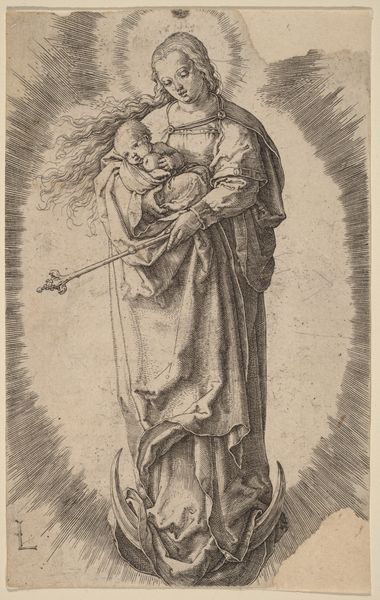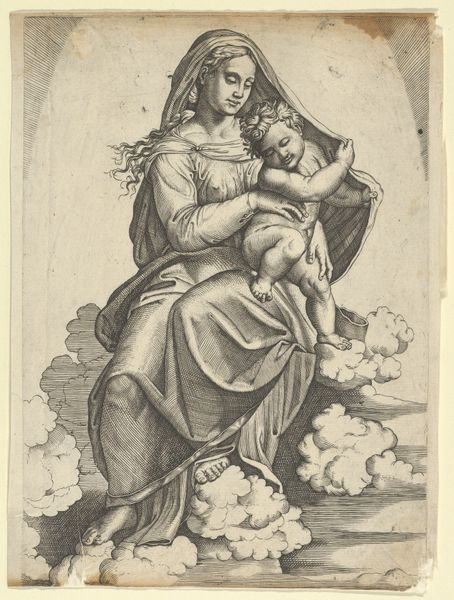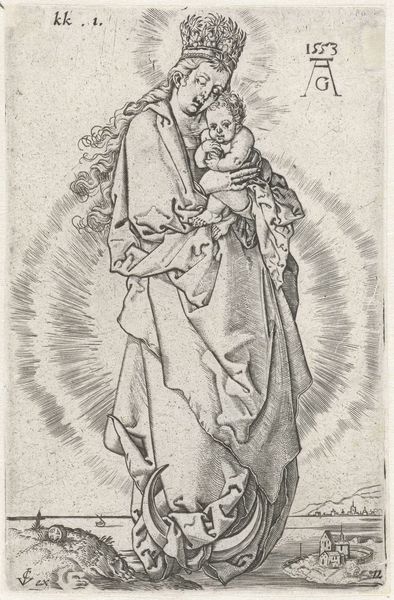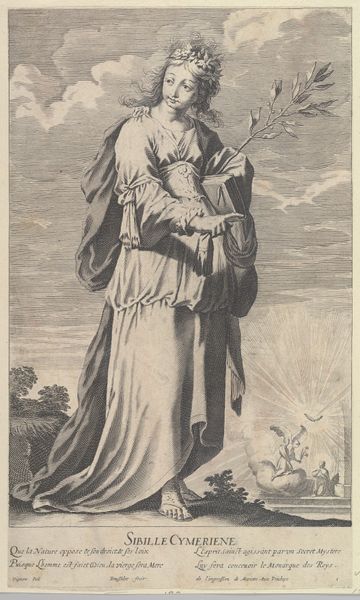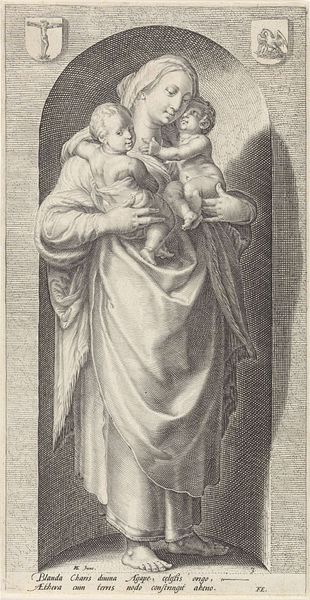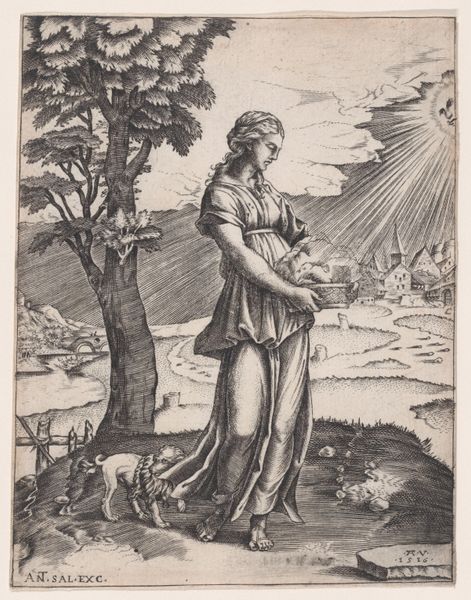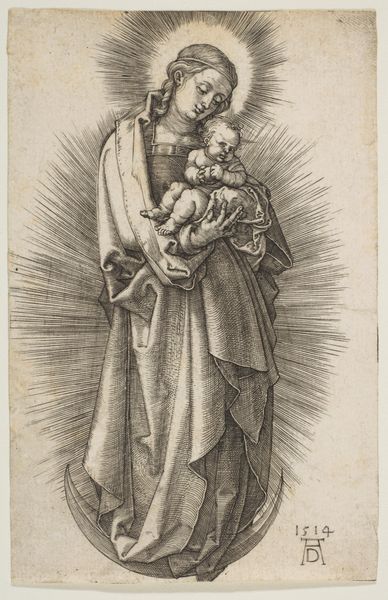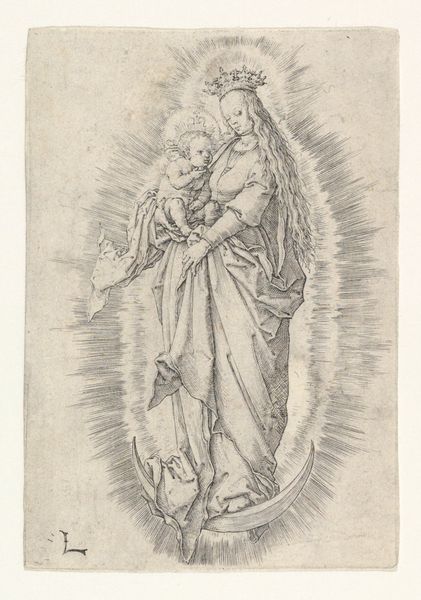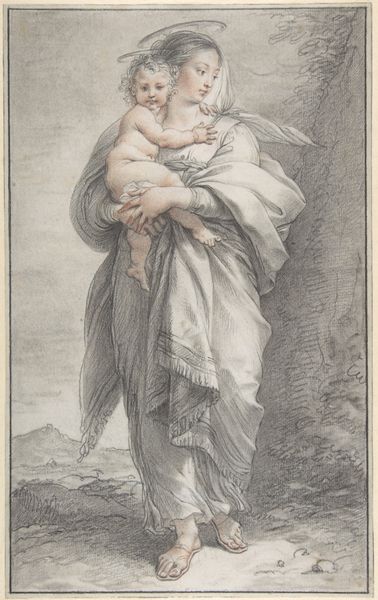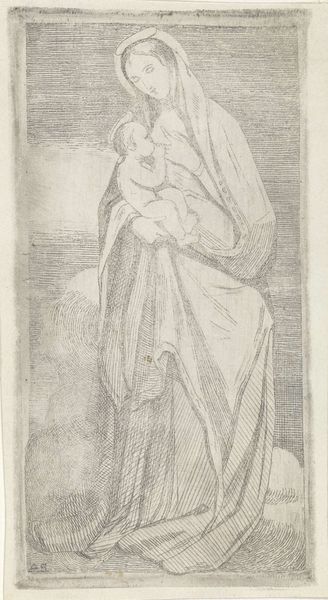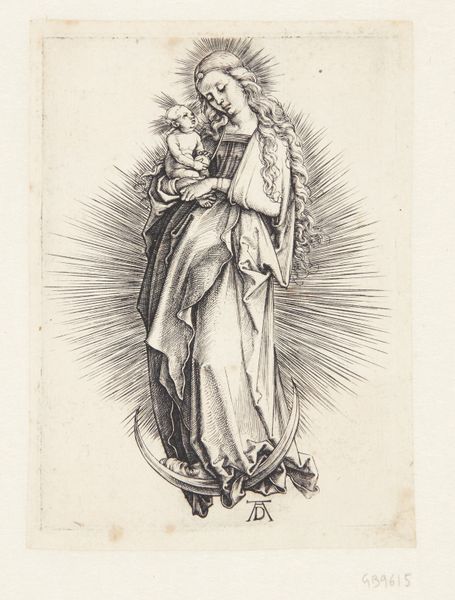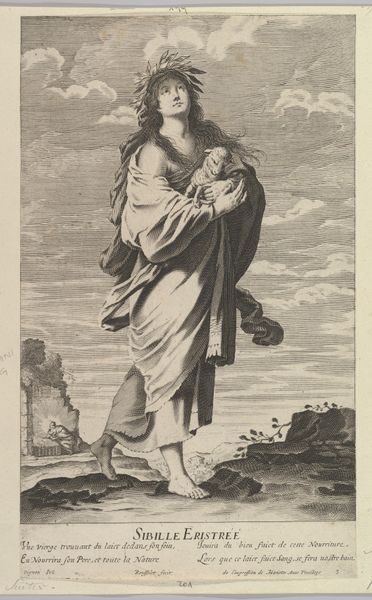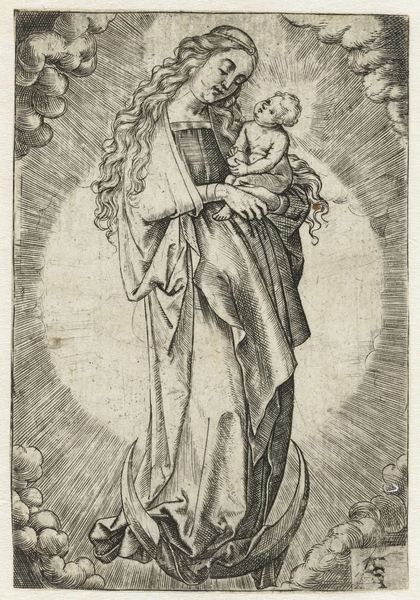
Virgin and Child (La Sainte Vierge debout embrassant l'enfant Jesus) 1565
0:00
0:00
drawing, print, engraving
#
portrait
#
drawing
# print
#
mannerism
#
figuration
#
italian-renaissance
#
engraving
Dimensions: Sheet (Trimmed): 4 3/8 × 2 11/16 in. (11.1 × 6.8 cm)
Copyright: Public Domain
Curator: This is Mario Cartaro’s engraving, "Virgin and Child," created around 1565. It resides here at the Met. Editor: Immediately, what strikes me is the raw materiality of the lines—you can practically feel the burin scraping across the metal. The starkness creates a somber mood despite the tender subject matter. Curator: The image is a beautiful example of Italian Renaissance printmaking and mannerist style. The positioning of Mary and Jesus immediately prompts conversation with intersectional analyses, the composition, while seemingly simple, conveys larger societal norms about motherhood, virtue, and piety during the period. Editor: Precisely! It’s all about production and what the choice of this medium afforded at this historical juncture. Prints like these disseminated images and, by extension, ideas across a broader audience than painting could at that time. Consider the labour involved: from the drawing to the engraving, inking, and pressing - it’s all incredibly human effort. Curator: It’s fascinating to think about how an image of this kind participates in systems of power, and also offers commentary on gender and religion. Motherhood is revered, but also presented with an element of severity, perhaps reflective of the restrictions placed upon women. Note that despite the religious context, there’s also this awareness of their relationship existing firmly within specific social constructs of that moment in time. Editor: Yes, and look at the clothing—the rendering of the heavy fabric gives a sense of Mary’s physical presence, while also subtly reminding the viewer of the textile industry. Curator: I think bringing these types of questions into dialogue with one another makes for a richer and more meaningful engagement. Looking closely at how religious and political ideas intersected during the Italian Renaissance makes a more intimate study of this work. Editor: And how understanding the process allows for us to really think about its context! Curator: Absolutely, taking that approach invites us to ask what images do, how they function, and whose interests they serve. It prompts inquiry into the broader scope of identity and representation. Editor: And for me, it's the hands-on, material quality of the engraving itself that keeps me grounded in the historical realities. Each scratch and line tells a story. Curator: Right. It’s the convergence of these angles that creates a deeper encounter. Editor: Precisely. Thank you.
Comments
No comments
Be the first to comment and join the conversation on the ultimate creative platform.
